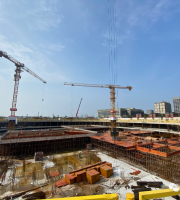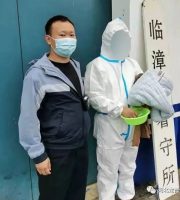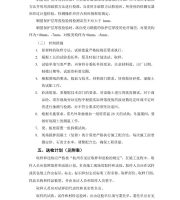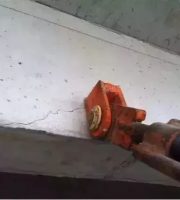In the construction of supporting piles for deep foundation pit, the common problems of rotary digging pile machine are: large disturbance of soil layer, poor protection of hole wall, large sediment thickness, easy to produce string holes between piles and so on
.
Combining with the engineering example, this paper discusses the quality control in the construction process of the rotary pile driver in the deep foundation pit supporting row piles: by controlling the footage speed, adjusting the mud proportion, improving the construction sequence, etc., it improves the hole cleaning efficiency and increases the temporary pile construction time interval
.
Due to its advantages of fast construction speed, high precision, low noise, environmental protection and convenient walking of pile machine, rotary excavation pile is becoming more and more widely used in the construction of supporting pile in urban deep foundation pit
.
At the same time, the scope of application of rotary excavation pile is also limited, how to improve the quality of rotary excavation pile in the construction process, so that it can be further promoted, will be an important topic of rotary excavation pile construction
.
Combined with the construction of foundation pit supporting piles in Daguan road tunnel project of Guangzhou Science Avenue, this paper discusses the quality control of rotary excavation supporting piles in the construction process
.
The project is located at the intersection of Yunxi Road, science Avenue and Daguan road in Guangzhou
.
It is a two-way 6-lane cross line tunnel with a total length of 895m, which is constructed by the method of support and open cut
.
The bored piles of Φ 1000mm and Φ 1200mm are used for the supporting piles of the tunnel foundation pit
.
The clear distance between the piles is 20cm and the pile length is 10.5m-24.7m
.
There are 607 piles in total
.
The original geomorphic unit of the project is the sea land alluvial plain of the Pearl River Delta
.
The soil structure of the site from top to bottom is miscellaneous fill, fine sand, alluvial silty clay, medium sand, diluvial silty clay, completely weathered granite and strongly weathered granite
.
The bottom of the supporting pile of the project is located in the clay layer or medium sand layer
.
According to the survey results, the muddy soil belongs to the weak low layer which is sensitive to seismic subsidence; the saturated sand layer will produce slight liquefaction (liquefaction index i1e = 0.19 ~ 4.77)
.
2
.
The construction technology of rotary drilling pile
.
The rotary drilling rig is selected in this project, and the construction technology is the same as that of traditional drilling (punching) cast-in-place pile except rotary drilling
.
Common problems in the construction of row piles with rotary excavation support: 1
.
Large soil disturbance and poor hole wall protection
.
Due to the fast drilling speed of rotary excavation pile machine, it mainly depends on soil cutting drilling, and there is no mud circulation in the process of rotary excavation drilling, so the hole wall protection is worse than that of drilling and punching piles
.
Especially in the filling and soft soil layer, hole collapse and shrinkage are easy to occur
.
For supporting row piles, large disturbance of soil layer will also lead to string holes between adjacent piles
.
When the soil layer is disturbed, it is easy to expand the hole in the process of pore forming
.
Looking up the concrete pouring records of supporting piles, it is found that the actual quantity of concrete pouring exceeds the theoretical quantity by more than 10%, while the hole expansion rate of piles with similar engineering geology using drilling or punching technology is generally between 5% and 10%
.
2
.
Due to the poor wall protection of rotary pile, it is easy for the drilling bucket to cut too deep or lift to collide with the hole wall during the hole forming process, resulting in the difficulty of emptying and the thick bottom of the hole bottom sediment
.
The sediment thickness measured on site shows that the sediment thickness of most piles is more than 50cm after one cleaning
.
For the supporting pile of deep foundation pit, the thickness of sediment at the bottom of the hole has little influence on the use function of the pile
.
However, when the low strain reflected wave method is used to detect the quality of the pile, it is found that the pile with large sediment thickness is difficult to receive the reflected wave, which affects the success rate and qualification rate of the detection
.
The excessive sediment thickness at the bottom of the hole also affects the bearing capacity of the pile, which is also unfavorable for the promotion of rotary excavation pile to large diameter bearing pile
.
3
.
When the bored pile is used as the supporting structure in deep foundation pit supporting engineering, in order to ensure the stability of soil, the problem of small spacing and clear distance between piles is common in the design
.
In the traditional construction technology of supporting row piles, the “pile separation method” is generally used to reduce the disturbance to the soil near the pile
.
Due to the large disturbance of soil layer and poor slurry wall protection during the hole forming process of rotary excavation pile, even after the completion of pouring and final setting of temporary pile concrete, it may affect it
.
Compared with the traditional construction method, the rotary drilling rig has the advantage of fast drilling speed (the fastest drilling speed can reach 1 m / min), but also because of the fast drilling speed of the rotary drilling rig, the disturbance of rotary excavation is relatively large, which is easy to increase the hole expansion rate of the pile hole, which may lead to adjacent pile string hole
.
Before drilling, the backfill soil around the casing shall be tamped to ensure the stability of the soil around the casing and prevent the collapse of the bottom hole wall of the casing due to the scouring effect of mud on the hole wall at the intersection of the lower part of the casing and the hole when the drill bit is lifted
.
In the process of rotary drilling construction, the reasonable drilling speed of rotary drilling should be selected according to the actual soil conditions of the project
.
In order to control the footage speed of rotary excavation, the following values are recommended: 0.5 ~ 1 m / min for cohesive soil, 0.3 ~ 0.5 m / min for miscellaneous fill or sand layer; when drilling from hard stratum to soft stratum, the drilling speed can be appropriately accelerated; when the soft stratum becomes hard stratum, the speed should be slowed down; in the stratum easy to reduce the diameter, the number of hole sweeping should be appropriately increased to prevent the diameter from shrinking; for the hard plastic stratum, fast speed drilling should be adopted In order to improve drilling efficiency, slow speed and slow drilling are adopted in sand layer, and mud specific gravity and viscosity are increased appropriately
.
In the process of rotary drilling, when the cylindrical bit of rotary drilling rig raises the mud level, the local space under the bit will produce “vacuum”, Therefore, after the completion of each drilling, the drilling rig operators are required to pay attention to slowly lifting the drilling tools, reduce the drilling and lifting speed of the drilling bucket, especially when the soil is loose or enters the sand layer, strictly prevent empty drilling, and timely supplement the mud to avoid hole wall collapse
.
After investigation, consultation, discussion, research and analysis, combined with the actual soil conditions of the project, the reasonable lifting speed of rotary drilling bucket is: 1 ~ 2m / min for cohesive soil, 0.5 ~ 1m / min for miscellaneous fill or sand layer
.
2
.
The mud proportion should be adjusted properly, and the mud with quality and quantity meeting the requirements should be prepared before the second hole cleaning and drilling, so as to prevent hole collapse during the construction of bored pile
.
The slurry prepared from Pengrun soil is used to protect the wall and stabilize the water level in the hole
.
In order to ensure the stability of the hole wall, the proportion of mud should be properly increased, the quality of mud should be well controlled, and the pressure difference between mud and groundwater should be fully used to control the water pressure
.
According to different soil conditions, the mud index control is as follows: according to different soil conditions, using different mud specific gravity, and according to the actual geological conditions to make appropriate adjustment within the control range, and strictly control the mud quality, can effectively enhance the role of mud wall protection, reduce the cross hole phenomenon between adjacent piles, and also reduce the pile reaming rate
.
The reverse circulation method is used to suck out the sediment at the bottom of the hole to achieve the purpose of hole cleaning
.
Generally speaking, there are two times to clear the hole of rotary drilling bored pile, that is, one time to clear the hole after the hole is formed, and two times to clear the hole before concrete pouring
.
Ensure that the quality index of the pile hole, the thickness of the sediment at the bottom of the hole, the amount of drilling slag in the circulating liquid and the dirt on the hole wall meet the quality requirements of the pile hole before concrete pouring
.
3
.
The traditional “pile separation method” construction usually needs to wait for 48 hours of temporary pile pouring or final setting before the construction of intermediate pile
.
When the net distance between adjacent piles is small, and the hole forming of rotary excavation pile has great disturbance to the soil layer, even the construction of separated piles may cause hole collapse or hole string
.
In view of the characteristics of fast construction speed of rotary digging pile and convenient walking of rotary digging machine (after completing the hole forming of one pile, the hole forming of the next pile can be entered, and the hole cleaning of the first pile and the hole forming of the next pile can be carried out at the same time), the construction of supporting row piles can adopt “jump three pile position method” to increase the construction time interval of temporary piles.
.




